-
Posts
36 -
Joined
-
Last visited
Content Type
Profiles
Forums
Articles
Gallery
Downloads
Events
Posts posted by Dogvet99
-
-
Is that a convex grind?
Bret -
Yowser, them's purty. Love the blade style and handle materials.
Bret -
Mark, I am in no way someone who should be giving advice on flat grinding. Only thing I can say is watch the Harvey Dean Video on flat grinding. I watched it 2-3 times and used my grizzly 2" grinder. The video is very instructive.
Matt, you may be a savant, but flat grinding is not easy. Lots of trial, error and experience in getting good flat grinds.
Good luck,
bret -
-
Thanks guys, I am working on a larger bowie style and am attempting my first true flat grind. I post it when I am done.
Bret -
-
I have been given a rear axel/trans-axel from a 60's model buick. It is in two pieces and is splined in the center to fit into the differential I am assuming. I am not real knowledgeable on car parts. It is approx. 1-1.25" thick at the center and tapers a bit wider where it attaches to the wheels. Any Idea what type of steel this is. I would like to try to make some knives out of it. Thanks, Bret
-
-
Thanks guys, much too kind. Phil, the touchmark is a hardened steel stamp I had made. I stamp the steel when I am normalizing, before quenching. I was a bit angled on this one. Note that the letters are darker and deeper on one side. Hopefully my next one will be a bit better. I like it so far.
Bret -
It has been awhile since I have finished a knife. This is # 5. Blade is 5160. Blade is forged and tang is stock removal. Scales are bloodwood. Blade is 6 1/2" and tang is 5 1/2". Spine has filework and ricasso has choil cutouts. Blade was triple quenched and tempered in oven. Spine and tang drawn back with torch. Also, my first use of my touchmark.
Bret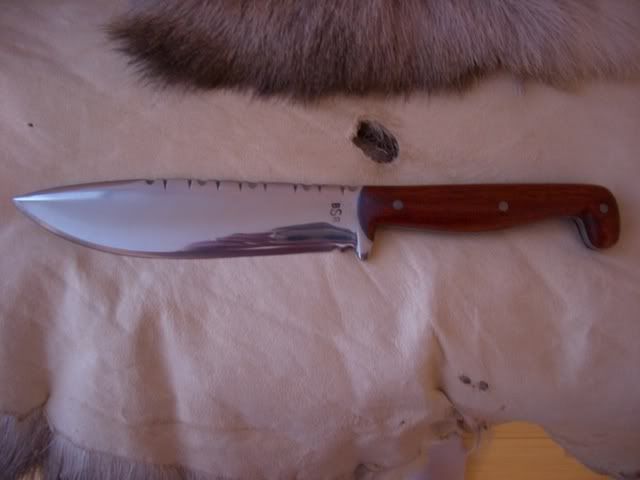
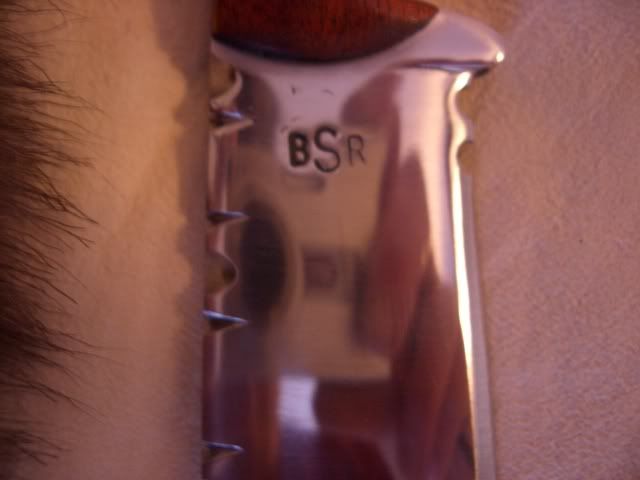
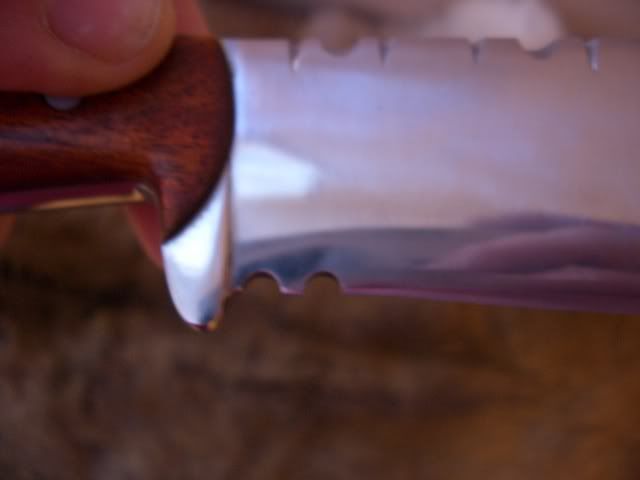
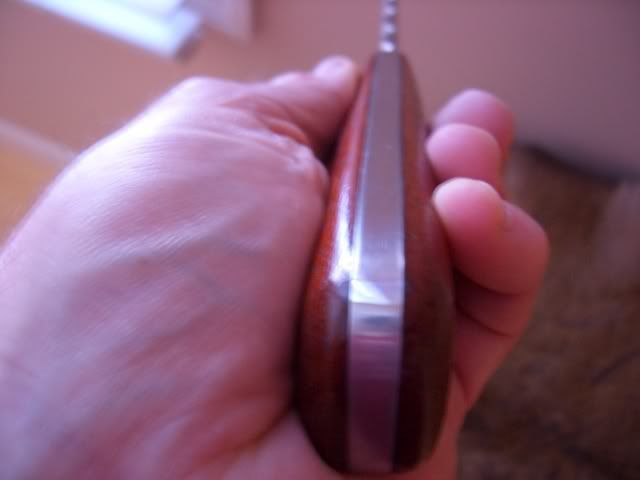

-
Rich, I like that idea. I will try that on my next one.
Thanks, Bret -
Phil, I use new 5160 bar from a leaf spring manufacturer here in St. Louis. I use bar that is 1 3/4 in wide and 0.25" thick. On this knife I cut the piece down to 1" wide and approximately 6" long before starting the forging. You can draw the tang out quite long while forging. Thanks for the compliments. Let me know if this was enough info.
Bret -
I like the sound of that, I will give it a try on the next one.
Keep it coming fellas.
Bret -
I read awhile back that drawing the temper back on the spine and tang of a knife with a torch can soften only the superficial layers of the metal and leave the deep layers still hard--prone to failure.
This weekend I was working on a full tang knife. I had normalized and triple quenched the knife. I tempered in an oven at 420 for 3 hours. I drew the tang back to Dark Blue/Gray with a torch and same on spine of knife. I then attempted to drill the holes in the tang for the scales. The drill bit worked well for the first 1/16" of depth but then stopped. I sharpened the bit with a drill doctor and re-tryed. Same thing-no movement. I can only believe that the outer layer softened and the inner metal remained hard.
I used a MAPP gas torch. THe steel is 0.25" thick 5160.
I then used the torch to heat the tang up to red heat and let air cool. Suprise, the drill bit cut like butter.
I had to requench and temper in the oven again.
My question, how should I draw the temper back? More time with the MAPP torch? I spent probably 15 minutes drawing the temper back the first time.
Also, I have problems with drawing the temper back when the edge of the blade is in water. Seems as if it doesn't get hot enough to draw back the temper.
Any help appreciated for this newbie.
Bret -
Nice job, love the blade.
Bret -
Thanks guys, I love this stuff.
Pete, a rare earth magnet is super strong. Not sure of the exact composition, but they are unlike any magnet you have experienced. I use little 1/4" x 1/4" round rare earth magnets sandwiched in the sheath. If you get two of these too close together they will smash your finger for sure and hurt like a son-of-a-gun. They work great to make sure the knife doesn't slip from the sheath.
Bruce, yep that is one of them. His name is Jack. He will be 10 this year. He's my boy.
Ml, the nickel is ground flat on the front and expoxied into place. Hopefully it will be there many years from now.
Bret -
-
4th knife completed. 5160 hammer forged and ground. pommel and guard are also 5160. Pommel has a buffalo nickel on it. Filework on spine. Leather sheath has rare earth magnet in it.
Bret -
I didn't post my 2nd knife, I gave it away. This one is getting donated to the United Bowhunters of Missouri Auction to be held the first part of February. It is 5160 steel, hammer forged and ground smooth. Spine was drawn back with a torch. Spine and pommel have filework. Handle is wenge. Both guard and pommel are also 5160 steel. Blade is 4.5" in length. Sheath is horizontal carry and has a rare earth magnet in sheath to make sure knife doesn't slip free.
Bret


-
Thank you for your kind words. I am looking for some guidance on sharpening with the belt grinder. I have a grizzly 2 x 72 and have a hard time maintaining an angle. I am using the platen so far. Any advice, tips, tutorials, etc would be much appreciated.
-
Thanks for the comments. I will try to post some pics of a new knife I am working on. It is a smaller hunter style. I am also going to work on the guard and try to refine it a little better. Thanks, Bret
P.S. I am a veterinarian(dogs and cats primarily).
I got started making longbows and recurves, laminated, about 15 years ago. I think that the patience I developed refining these will help with the knife making process. -
I have been lurking for awhile now and have thrown my hand into forging knives. I bought a gas forge, made a bucket anvil, and collected assorted tools off ebay(tongs, hammers, etc.).
This is my first. 5160 leaf spring. Hammer forged to shape and then finish ground. I bought a grizzly knife grinder. I bought a book by Jim Hirisoulas, and a video by tim lively to help guide me.
I tempered the knife in the oven and differentially treated the tang and spine with a torch.
The guard and pommel were made by me out of 5160. The handle is wenge and black micarta. I also did some filework on the spine.
Let me know what you think.
Bret

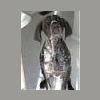




W1 & Walnut
in Knife Making
Posted
Beautiful knife, great job.
Bret